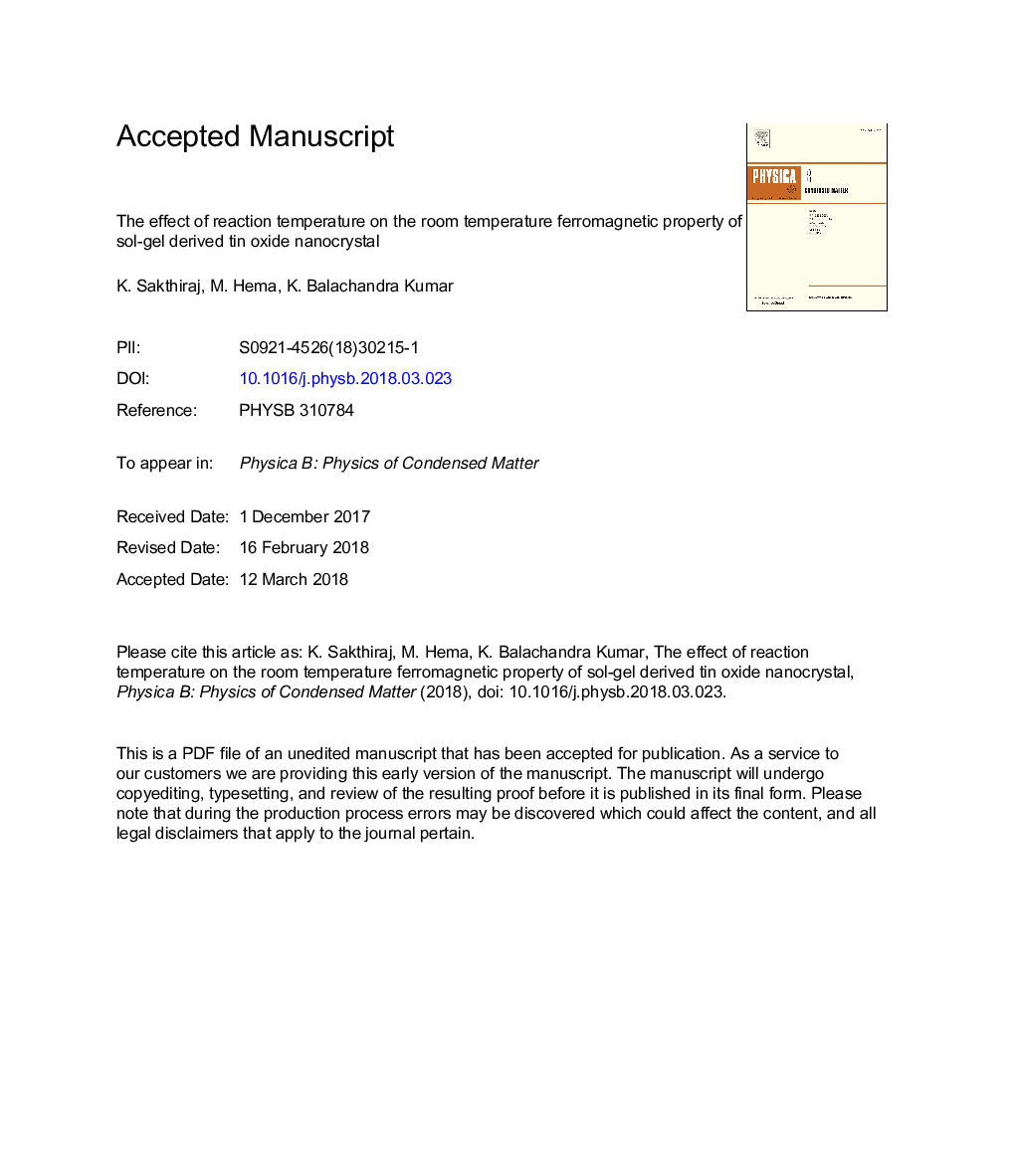| Article ID | Journal | Published Year | Pages | File Type |
|---|---|---|---|---|
| 8160663 | Physica B: Condensed Matter | 2018 | 18 Pages |
Abstract
In the present study, nanocrystalline tin oxide materials were prepared using sol-gel method with different reaction temperatures (25â¯Â°C, 50â¯Â°C, 75â¯Â°C & 90â¯Â°C) and the relation between the room temperature ferromagnetic property of the sample with processing temperature has been analysed. The X-ray diffraction pattern and infrared absorption spectra of the as-prepared samples confirm the purity of the samples. Transmission electron microscopy images visualize the particle size variation with respect to reaction temperature. The photoluminescence spectra of the samples demonstrate that luminescence process in materials is originated due to the electron transition mediated by defect centres. The room temperature ferromagnetic property is observed in all the samples with different amount, which was confirmed using vibrating sample magnetometer measurements. The saturation magnetization value of the as-prepared samples is increased with increasing the reaction temperature. From the photoluminescence & magnetic measurements we accomplished that, more amount of surface defects like oxygen vacancy and tin interstitial are created due to the increase in reaction temperature and it controls the ferromagnetic property of the samples.
Related Topics
Physical Sciences and Engineering
Physics and Astronomy
Condensed Matter Physics
Authors
K. Sakthiraj, M. Hema, K. Balachandra Kumar,
